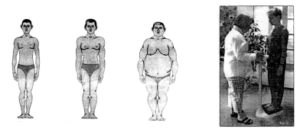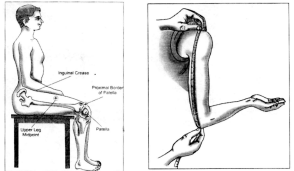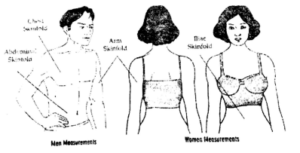Chapter – 7
Test, Measurement & Evaluation
In this post, we have given the Important Questions of Class 11 Physical Education Chapter 7 (Test, Measurement & Evaluation) in English. These Important Questions are useful for the students who are going to appear in class 11 board exams.
| Board | CBSE Board, UP Board, JAC Board, Bihar Board, HBSE Board, UBSE Board, PSEB Board, RBSE Board |
| Textbook | NCERT |
| Class | Class 11 |
| Subject | Physical Education |
| Chapter no. | Chapter 7 |
| Chapter Name | (Test, Measurement & Evaluation) |
| Category | Class 11 Physical Education Important Questions in English |
| Medium | English |
Short Answer Type Questions 1 Marks
Q1. What do you mean by a test?
Ans. A test is a tool that is used to evaluate the quality, performance, and reliability of the task completed by a person.
Q2. What do you mean by Measurement?
Ans. Measurement is about the collection of data and information about certain skills or levels of fitness of an individual by using tests and relevant techniques.
Q3. What do you mean by an Evaluation?
Ans. It is the process of education that involves the collection of data from the products which can be used for comparison with preconceived criteria to make a judgment.
Q4. Define Test.
Ans. A test is a tool that is used to evaluate the skill, knowledge, capacities, or aptitudes of an individual or a group.
Q5. Define Measurement.
Ans. Measurement is the process of administrating a test to obtain quantitative data.
Q6. Define Evaluation?
Ans.
- It is a decision-making process that assists to make grades and ranking.
- It is a technique by which we come to know to what extent the objectives are being achieved.
Q7. Write the formula to calculate the B.M.I.
Ans. B.M.I. = Waist Circumference/Hip Circumference
Q8. What do you mean by some types?
Ans. Some types basically mean body types which are further classified into three
types i.e. Endomorph, Mesomorph, and Ectomorph.
Q9. What do you mean by waist-hip ratio?
Ans. Measurement of waist circumference divided by hip circumference is called waist-hip ratio.
Q10. Write the formula to calculate the waist-hip ratio.
Ans. Waist circumference = Waist Circumference/Hip Circumference
Q11. State the uses of Anthropometric measurements
Ans. Anthropometric measurements of height, weight, arm and leg length, waist circumference and skin fold etc. are significant indicators of health that enable us to know the physical growth and development and health problems of an individual.
Questions Carrying 3 Marks Each
1. Explain the procedure of measuring Somato Types in brief.
Ans. Somatotypes mean human body shape and physique types. Some types help physical education and sports teachers classify the students for particular sports and games on the basis of physical, mental, and practical aspects.

The procedure of measuring somatotypes is based on the classification by W.H. SHELDON.
1. Endomorphy— Such individuals have short arms and legs and a rounded physique. The upper
parts of the arms and legs are significantly thicker than the lower parts. Their excessive mass hinders their ability to compete in sports.
2. Mesomorphy— Such individuals have balanced body compositions and athletic physiques. They
are able to increase their muscle size quickly and easily and have rectangular shapes body. Their chest and shoulders are broader in comparison to their waistline.
3. Ectomorphy— These individuals are generally slim because their muscles and limbs are
elongated. As they have a weak constitution of body and usually face difficulties in gaining weight. Their light body constitution makes them suited for aerobic activities like gymnastics

Q2. Discuss the procedure of measurement of arm length and upper arm length.
Ans. The procedure of measurement of 4 arm length –
The subject must stand with his arms hanging by the side of his body with his fingers outstretched. A measurement is made from the acromial i.e. the bony tip of the shoulder to the tip of the little finger.
The procedure of measurement of upper arm length – The subject must stand upright with body
weight distributed equally on both feet. The right arm should be bent at 90 degrees from the elbow with the palm facing upwards. A measurement is made from the acromial to the bony part of the mid-elbow. Measurement must be taken to the nearest 0.1 cm. and recorded.


Q3. Elaborate on the procedure of measurement of leg length and upper leg length.
Ans.
Leg length: The leg length of a child or adult has measured with j a flexible tape from the bottom to the upper edge of a great trochanter.
Upper leg length: The subject is made to sit on a box with one of the knees bent at a 90-degree angle with his back up straight to measure the upper leg length from the inguinal crease to the proximal border of the patella. Record the measurement to the nearest 0.1 cm.
Q4. Calculate the BMI of a male person whose weight is 80kg and height is 1.6m. Also state the category in which he falls.
Ans.
BMI = Weight in Kg/Height in m2
BMI = 80/1.6×1.6
= 80×100/16×16
The above person falls in the class -1 Category.
Q6. Explain in brief the procedure or Anthropometric measurement of weight.
Ans. The scale should be placed on a hard floor surface so that the beam gets into a balanced position.
Procedure for weight measurement –
- The subject must wear light clothes.
- He should stand in the center of the platform of the weighing machine with his body weight equally distributed on both feet.
- Read the measurement in front of the needle and record it to the nearest 0.1 kg.

Q7. Explain in brief the procedure of Anthropometric measurement of height.
Ans. The child or adult should remove socks, shoes, jackets, or any other heavy clothing. The floor surface should be plain and hard. The height should be measured using a stadiometer.
Procedure for height measurement –
- The subject should stand with his feet flat and together on the floor. Arms should be by the sides and knees and back should be straight. The back of the head, buttocks, calves, heels, and shoulder blades should touch the measuring surface.
- After that, the horizontal sliding part of the stadiometers lowered gently so that hairs get pressed flat and the subject should be asked to stand still.
- The height of the subject should be read to the nearest half in centimeters and recorded.

Long Answer Type Questions (5 Marks Each)
Q1. Explain in detail the importance of Tests and Measurement and Evaluation in the field of games and sports.
Ans.
- In the field of games of the sports program. It is important to select a target. If a person desires to improve himself in different aspects of fitness. He will have to undergo fitness programs.
- Test, Measurement & evaluation in physical education are the devices that are needed to collect the details regarding the needs, abilities, and altitudes of a sports person.
- A test is basically a situational presentation, where specific responses are collected from the subject. These responses are measured both qualitatively and quantitatively.
- Measurement is about the collection of data as performance or task and completed by a sports person by using tests and scientific techniques.
- Evaluation is the process of physical education that involves a collection of data from the products which can be used for comparison with preconceived criteria to make a judgment.
Importance of Test, Measurement & Evaluation
The importance of tests, measurement & evaluation in the field of games & sports is the following ways.
- To frame the objectives: Setting a target, and goal according to the need and requirement.
- To realize whether the objectives are achieved or not.
- To understand the need, ability, and capacity of any individual.
- To evaluate the learner: so that feedback can be given.
- To evaluate the teaching program.
- For the classification or grading of the students.
- To check the progress or improvement of the learner from time to time.
- For diagnosis of learning program: Bio-mechanics, motor skill and cognitive, etc.
- Prediction of future performance.
- Selection of team or individual events and a player.
- For the intensive type of research, it is essential.
- For the pose of guidance of counseling.
- Evaluate different methods of instruction.
Q.2 Explain the four importance of test, measurement & evaluation in detail.
Ans. The four importance in the physical education field are given below test, measurement & evaluation:
- 1. To frame the objectives – Test and Measurement help in setting the target or goal according to the need and requirement. By adopting the Test and Measurement techniques the physical education teachers get an accurate idea about the progress made by the students.
- 2. To evaluate the learners – In the field of physical education and sports Test and easurement helps in the collection of data which further helps in evaluating the learner’s ability separately. It also helps the sports person in enhancing his sports performance.
- 3. To evaluate the teaching program – Test and Measurement is a scientific tool that helps the teacher to adopt the correct methodology for the sportsman so that desired results may be achieved.
- 4. To discover the needs and requirements of the participants – Needs of the participants are correctly assessed by the scientific approach of Test and Measurement. It helps in knowing where more emphasis is needed so that target may be achieved.
Q.3 Explain the procedure for fixing marks for skin fold measurement.
Ans. The marking of skinfold measurements should be proper for taking accurate anthropometric measurements. So, for proper marking of skinfold measurements, the following procedures should be taken into consideration.
1. Triceps skinfold – The child or adult must stand up straight with arms relaxed. With the help
of a measuring tape mark a point with a pen at the center of the triceps. This is the point or mark from where the skinfold measurement should be done with the help of a skinfold caliper.
2. Sub Scapula Skinfold – Find out the exact location of the scapula. The skin fold area is just below the inferior angle of the scapula. Skin fold measurement should be done with the help of skin fold calipers.

3. Suprailiac skinfold – The intersection of a line joining the spinal and front part of the armpit and
A horizontal line at the level of the iliac crest can be marked for skinfold measurement.
4. Abdomen skinfold – The abdomen muscles of the subject must be relaxed. He may be asked
to hold his breath if any movement interferes with the process of measurement. A point should be marked 3cm to the right and 1 cm below the midpoint of the umbilicus.
5. Thigh skinfold – The child or adult whose measurement is to be taken must sit on a chair with his back completely straight. Now mark a point exactly between the knee cap and the inguinal crease on the thigh for skinfold measurement.
Q4. Explain the procedure of skinfold measurement in detail.
Ans. Skinfold measurements are also called “fatfoid thickness”. These measurements provide information or data on the thickness of double folds of the skin and subcutaneous adipose tissue at specific sites of the body. In simple words, a skinfold provides the information about general fatness of the body.
The procedure of skinfold measurements is as under –
1. The arm of the subject or child should be hung loosely. Stand behind the subject and pull the vertical skinfold about 1/2 inch from the spot already marked. Keep the skinfold caliper erpendicular to the length of the fold centering the mark. Record the measurement to the nearest millimeter.
2. Sub scapula skinfold – After locating the marked point on the sub-scapular region, pull a skin
fold for about 34 inches above and keep the skin fold caliper perpendicular to the length of the skinfold. Release the capilar and note the measurement to the nearest millimeter.
3. Suprailiac skinfold – The subject should stand straight with his feet together and arms relaxed.
Pull a skinfold 34 inches above the marked point with the thumb and index finger. The skinfold caliper should be kept perpendicular to the length of the skin fold. Release the caliper and note the reading on the dial to the nearest millimeter and record it.
4. Abdomen skinfold – After locating the already marked point, pull a horizontal skinfold to about 34 inches. Place the skinfold caliper perpendicular to the length of the skinfold. Release the caliper and note the reading the nearest of millimeters and record it.
5. Thigh skinfold – The person is made to stand with his weight on the left leg and right leg forward with the knee slightly bent. Grip a skinfold on the already marked area on the mid-thigh. Place the skinfold caliper and note the reading to the nearest millimeter and record it.

Value-Based Questions
Q.5 A group of students from Class-XI reports to the Physical Education Teacher for participating in various sports activities. Where the Teacher/ Coach has to classify the students according to their physical appearance and observe the group property. He find out that few students are having
round shape body structure, few are fit and healthy and few of them are tall and this.
1. How will the classification of the students be done by the Teacher?
Ans. The students will be classified according to:
- Round-Shaped Body – Endomorph
- Fit and Healthy – Mesomorph
- Tall and thin – Ectomorph
2. What kind of Games can be suggested for Round shaped body structured students ?
Ans. Weight lifting and Powerlifting etc. which need extra strength and Power for these Games.
3. What kind of Games can be suggested for Mesomorphic students?
Ans. Athletics especially running events.
4. What type of Games can be suggested for tall and their students?
Ans. Long Distance Running, Volleyball, Basketball, etc.
We hope that Class 11 Physical Education Chapter 7 (Test, Measurement & Evaluation) Important Questions in English helped you. If you have any queries about class 11 Physical Education Chapter 7 (Test, Measurement & Evaluation) Important Questions in English or about any other notes of class 11 Physical Education in English, so you can comment below. We will reach you as soon as possible…